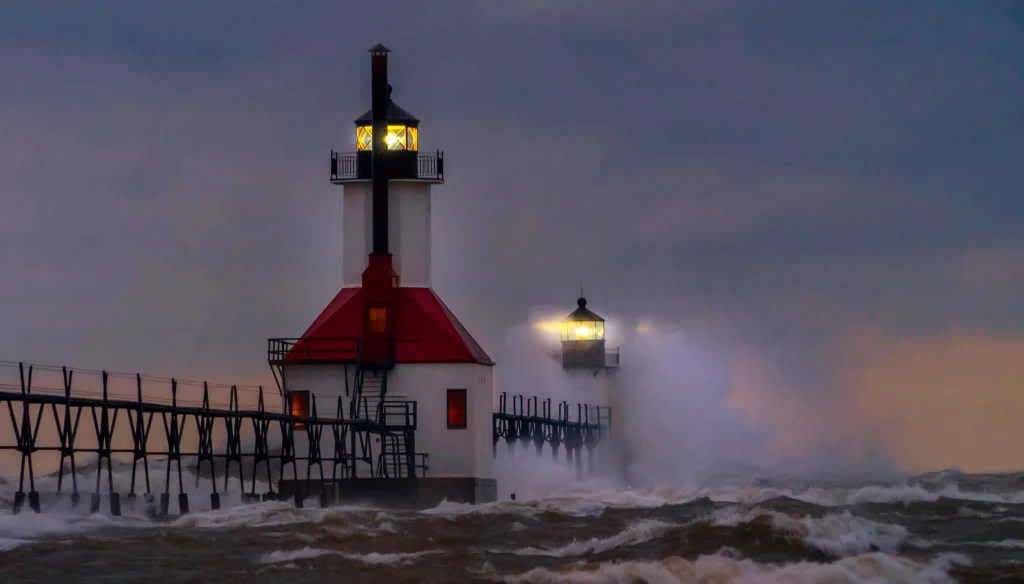The high winds and epic waves of recent days have been like a magnet drawing people to the waterfront, fascinated with the power of nature. Fortunately, most who have made the trek to the shore have watched the fury from the comfort of their car seat, behind the windshield. Some, however, take life-threatening risks.
Those are the ones targeted by messages this week from the U.S. Army Corps of Engineers who is urging caution around Great Lake piers, breakwaters and jetties, particularly during those times of high winds and waves.
Many accidents and incidents near harbor structures occur during the turbulent weather season late in the year and this year higher than normal water levels are posing an added threat. The lakeshore attracts local residents and visitors alike and some may not be aware of the powerful impact that strong winds, storms and high water levels can bring.
The Great Lakes are experiencing higher than normal water levels, which bring safety hazards such as submerged breakwaters, dangerous rip currents and electric shock risks.
Many piers, docks and portions of breakwaters may not be visible above the water surface due to high water and waves. Winds often affect local water levels, dramatically increasing levels during storms and on windy days. Structures that may be visible on a calm day may not be visible on a windy day.
Although breakwater structures are built for navigation, they are also often used for recreation. Walking along breakwater structures can be hazardous – the uneven slippery surfaces, especially when doubled with wave action, increase the risk of falling in to the water. In addition, large armor stones may be hidden below the water surface. There is significant risk of getting wedged between armor stones or striking a stone with one’s body, should an individual fall or jump into the water.
Water circulation can differ with changes in water levels. When water levels, wind and waves increase, so does the risk of dangerous currents. Rip currents and structural currents are a common cause of drowning. Rip currents are fast-moving, narrow currents of water that flow away from shore. Structural currents can occur at fixed structures such as breakwaters and piers, and flow away from shore parallel to the structure. To get out of a rip current, it is advised to “Flip, Float, Follow” until the current subsides to save your energy and reduce your risk of drowning.
Electric shock drowning is an increased risk due to high water levels. Water-overtopped docks at marinas or public areas may have electrical hook-ups, which have the potential to shock someone that has come in contact with the water. When immobile due to shock, the risk of drowning increases.
Cold water itself is a significant safety threat should a person slip or fall off a breakwater or pier into the water. Being immersed in cold water (60°F degrees and colder) can cause cold water shock during the first minute of exposure. Cold water shock causes gasping and difficulty in breathing, followed by muscle failure, all of which can lead to drowning.
The Army Corps cautions everybody to stay safe. For more information on water and pier safety, the Great Lakes Beach & Pier Safety Task Force’s video, “Respect the Power,” is a great resource. The Great Lakes Surf Rescue Project http://www.glsrp.org/ is another resource for water safety.
The photo accompanying this story on Moody on the Market, showing the power of wind and waves, is courtesy of award-winning professional photographer Molly Pate of Berrien Springs.






